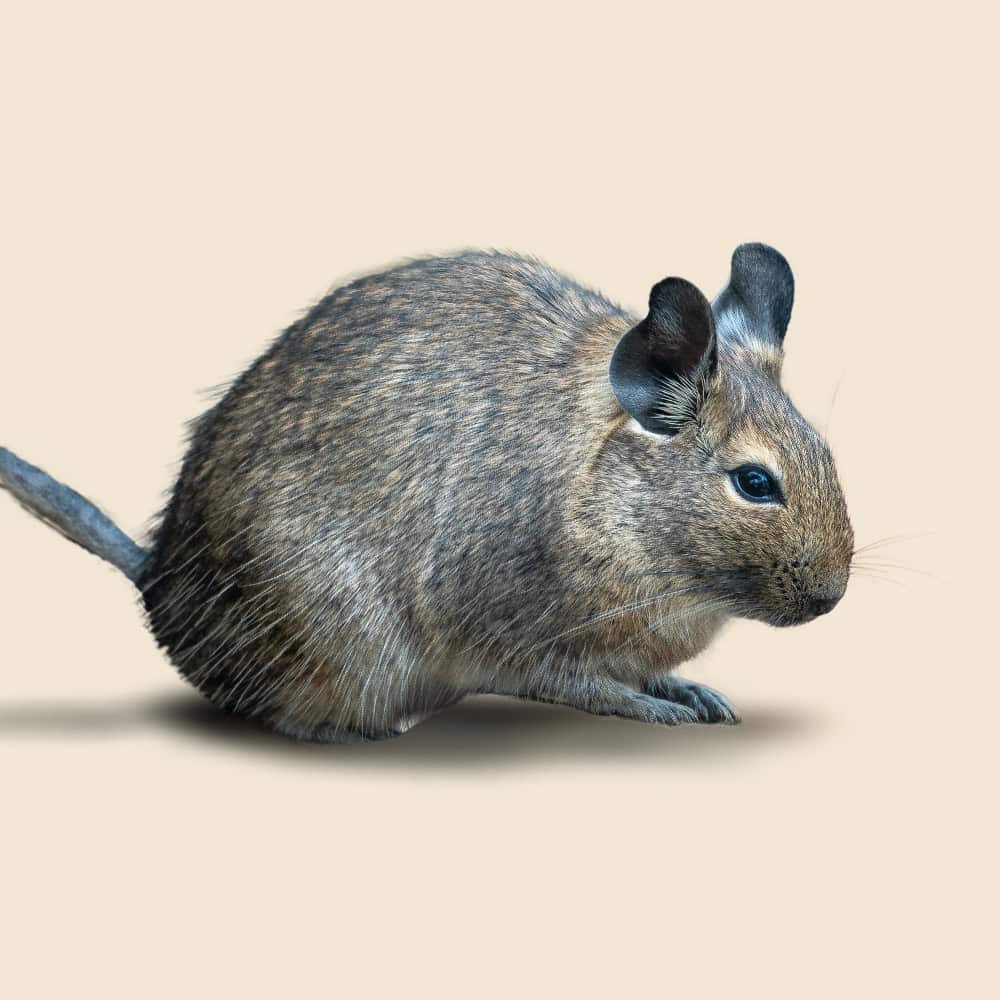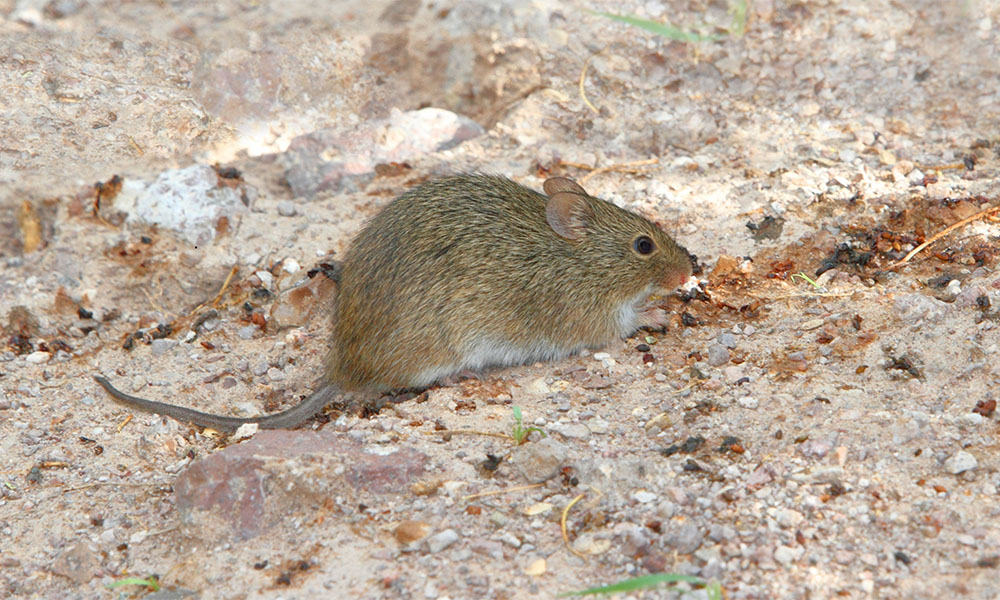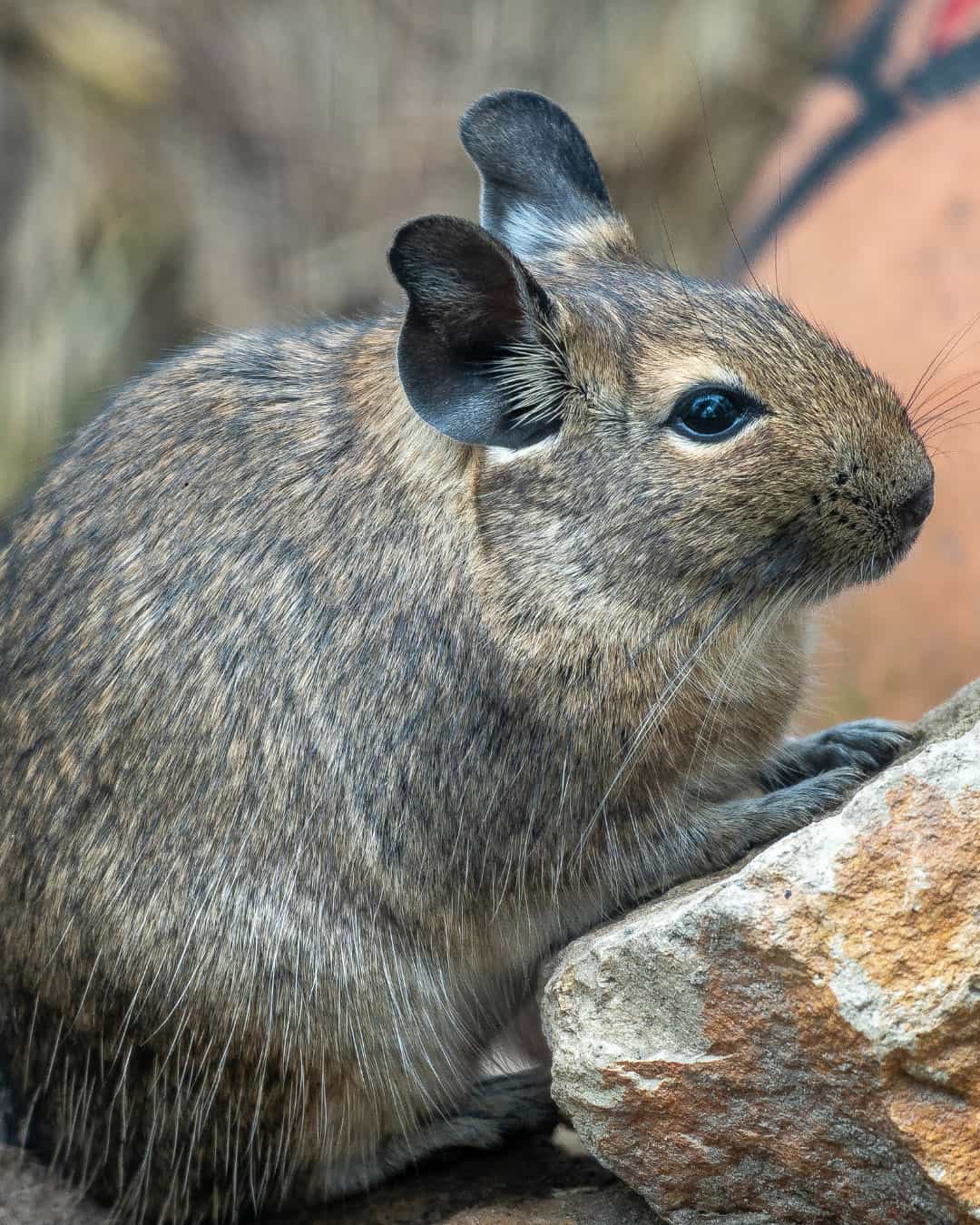Woodrat Facts & Information
Woodrats, also known as pack rats, are large rodents known for their unique habit of collecting and hoarding objects in their nests, called "middens." These nocturnal rodents can cause significant damage to homes, gardens, and outdoor structures, especially in rural or wooded areas.

Neotoma Cinerea
What You Need To Know About Woodrats
What do woodrats look like?
Woodrats, also known as packrats, are medium-sized rodents measuring 7 to 8 inches in body length, with tails that can add another 6 to 8 inches. They have large ears, prominent eyes, and soft, grayish-brown fur with a lighter underside. Their tails are furry, unlike the hairless tails of common rats.
What do woodrats eat?
Woodrats are herbivores, feeding primarily on plant materials such as leaves, seeds, fruits, nuts, and bark. They have a special fondness for prickly pear cacti and will also gather and store food in their nests for later consumption.
What sort of habitat do woodrats live in?
Woodrats prefer rocky outcrops, forests, and desert environments, depending on the species. They are known for building large nests, called “middens,” out of twigs, leaves, and other debris, which they gather and stack in sheltered areas like caves, crevices, or under trees.
How do woodrats commonly behave?
Woodrats are nocturnal and solitary creatures, spending most of their time gathering materials to build and fortify their nests. They are known for their “packrat” behavior, where they collect shiny or interesting objects and incorporate them into their nests. Woodrats are territorial and mark their homes with urine to ward off intruders.
Did you know this about woodrats?
Woodrat nests, or middens, can last for centuries, with some discovered to be thousands of years old! These ancient nests, preserved in arid environments, have provided valuable insights into the environmental history of the regions they are found in. Additionally, woodrats have an interesting habit of swapping objects—if they find something more interesting than what they are carrying, they will often leave their original item behind in exchange.
Understanding Woodrat Infestations
Understanding woodrat infestations is essential for managing them effectively. Woodrats typically measure around 6 to 8 inches in body length, with long, bushy tails. They are often mistaken for other rodent species, but their habit of collecting shiny or colorful objects makes them stand out. Woodrats build large nests from twigs, leaves, and debris in outdoor areas or inside attics, sheds, or garages. They are also known to gnaw on wires, insulation, and structural materials, making them a nuisance indoors.

How Hearts Handles Woodrat Treatment
Hearts Pest Management employs an integrated pest management approach to handle Woodrat infestations.
Woodrat Inspection
Woodrat Treatment
Woodrat Prevention
Educational Resources

Think You Might Have a Woodrat Infestation?
At Hearts Pest Control, we understand the challenges associated with Woodrat infestations and are here to provide professional solutions tailored to your needs. Flourishing in warm and humid climates, they are prevalent in many regions, including San Diego County, Orange County, and Los Angeles County.